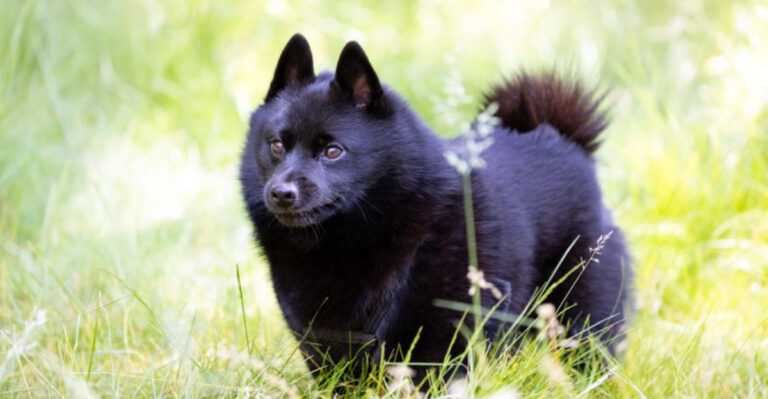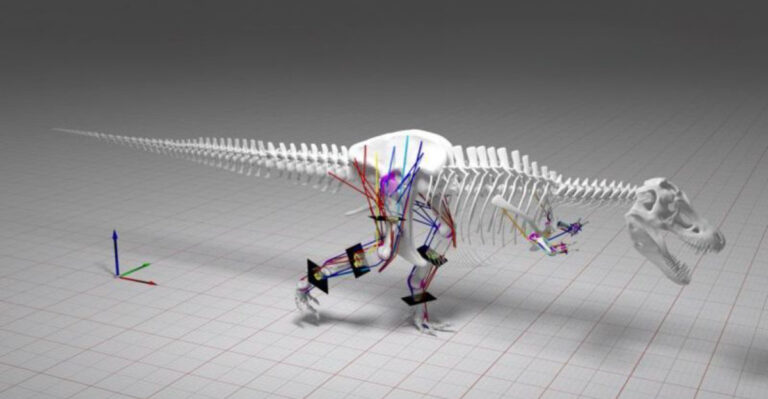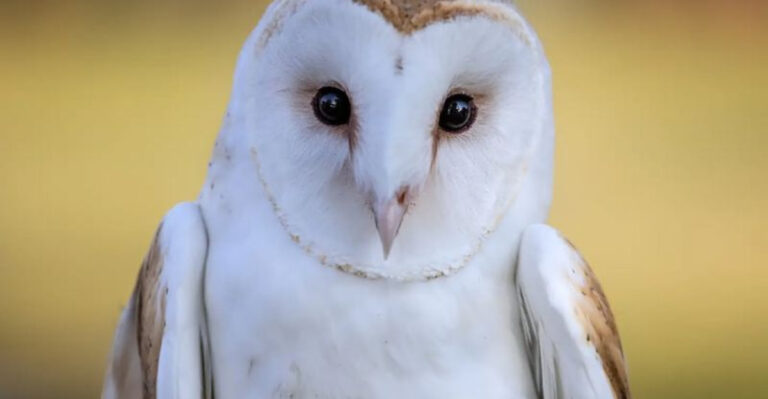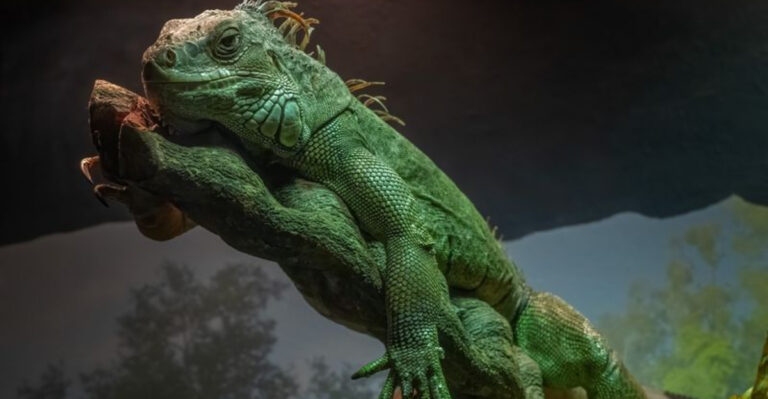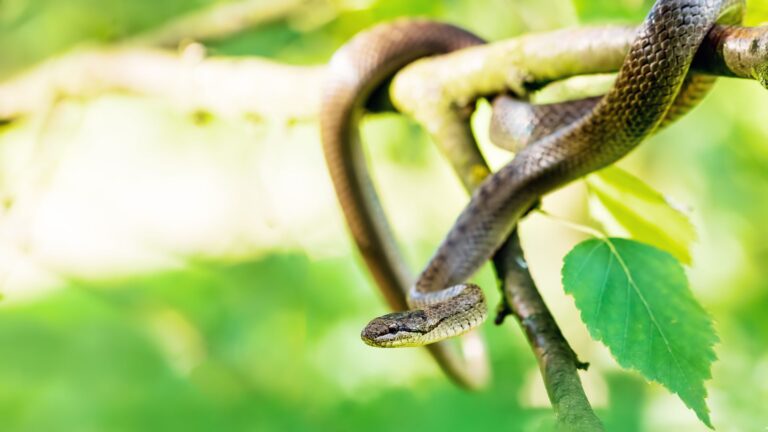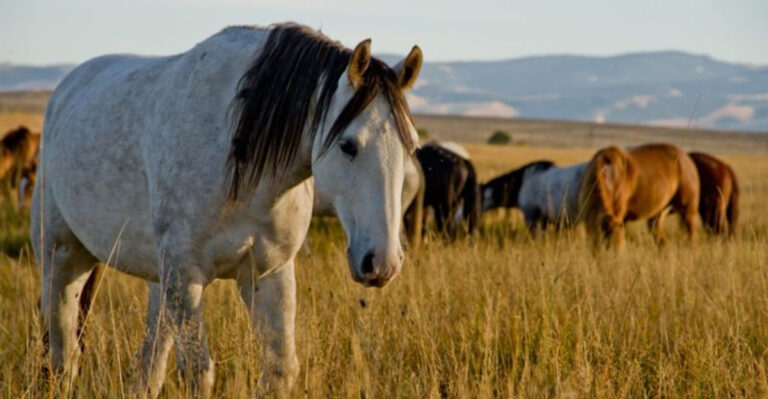14 Signs Your Cat Might Be In Pain (And 6 Signs That Show They’re Feeling Happy)
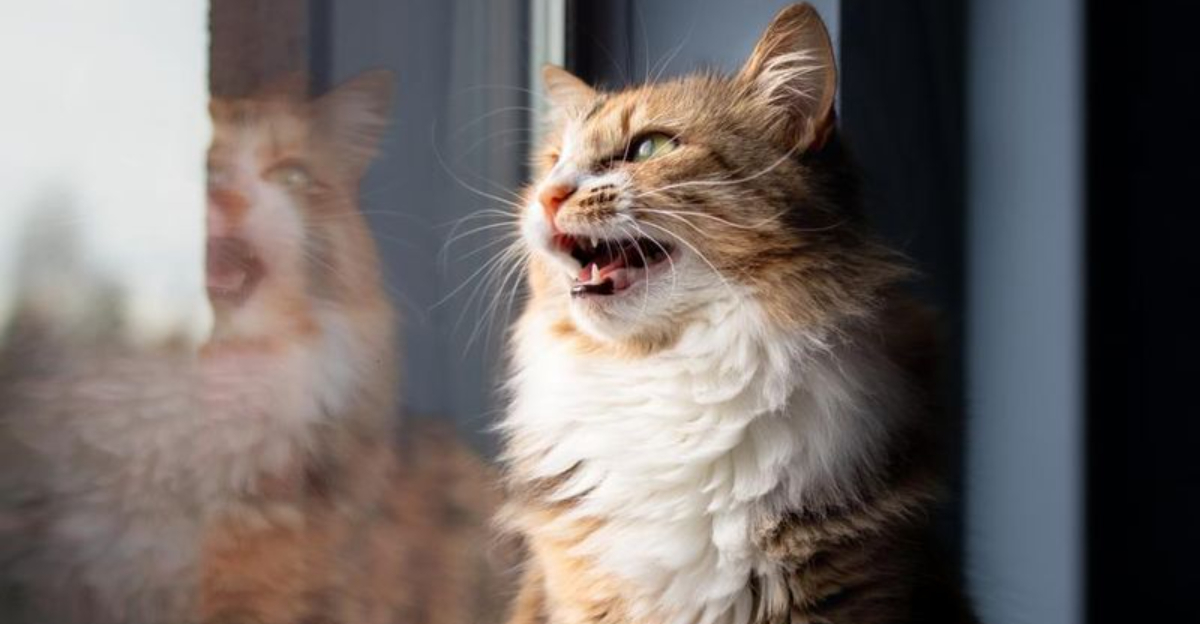
Cats, those whiskered wizards of mystery, often leave us baffled with their enigmatic ways.
But beneath their cool, aloof exterior, they might be trying to tell us something important—like, “Hey human, I’m not feeling so great,” or “Life is purr-fect right now!” Let’s unravel these feline secrets and keep our furry friends content.
1. Change In Appetite
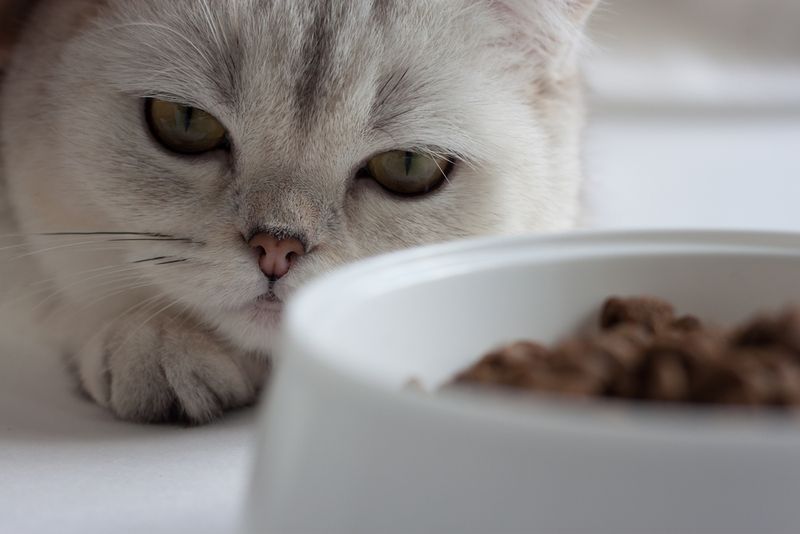
You know how cats are basically furry food critics? If your feline suddenly turns up its nose at dinner, it might be more than just a picky palate. A sudden change in appetite can indicate discomfort or illness. Keep an eye out for consistent meal refusals; it’s like your cat’s way of sending a culinary S.O.S.
2. Increased Vocalization
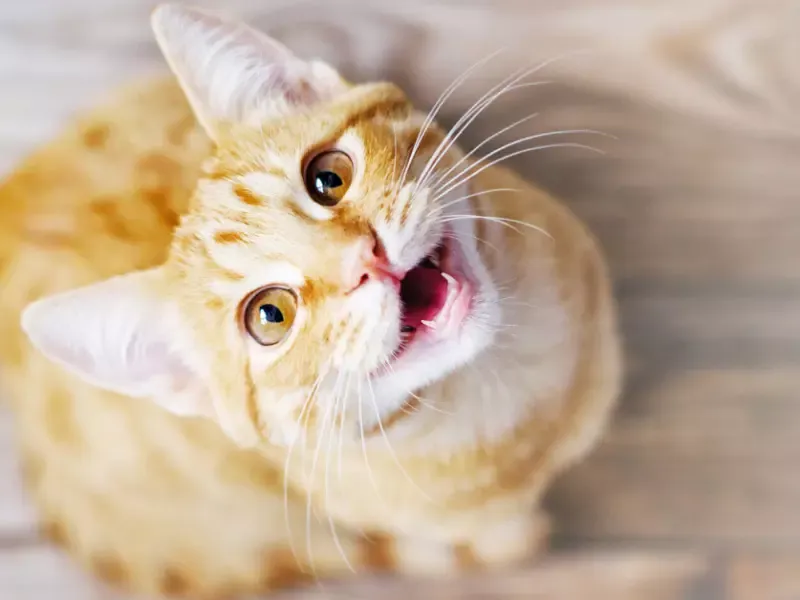
Is your cat serenading you with its vocal prowess at odd hours? When a usually quiet kitty suddenly turns into a chatterbox, it’s time to listen up. This might be their way of saying, “I’m not comfortable!” particularly if the meows sound distressed. It’s not an impromptu opera; it’s a call for help.
3. Lethargy
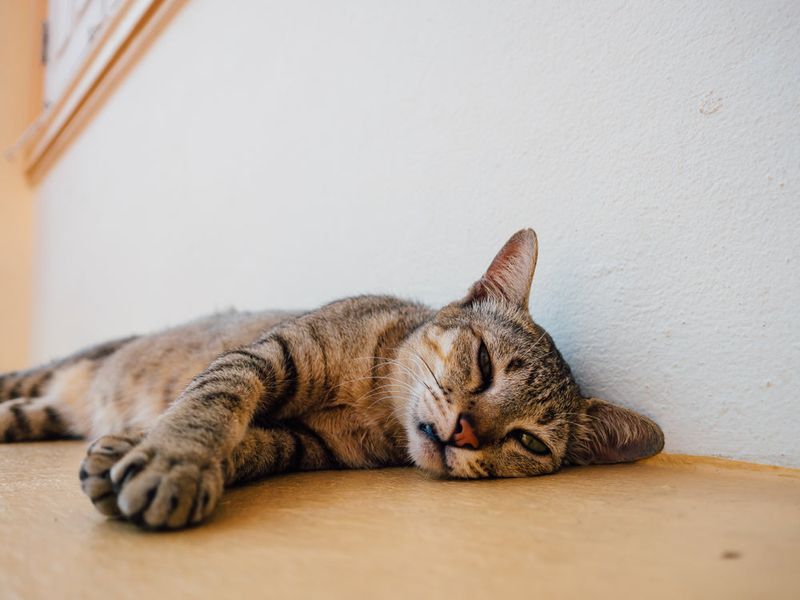
Cats are professional nappers, but if yours suddenly becomes a full-time couch potato, there might be a problem. Lethargy beyond their usual lounge routine could be a sign of pain or illness. It’s like your cat’s hitting the snooze button on life. Monitor their energy levels to ensure it’s not more than just a lazy day.
4. Hiding
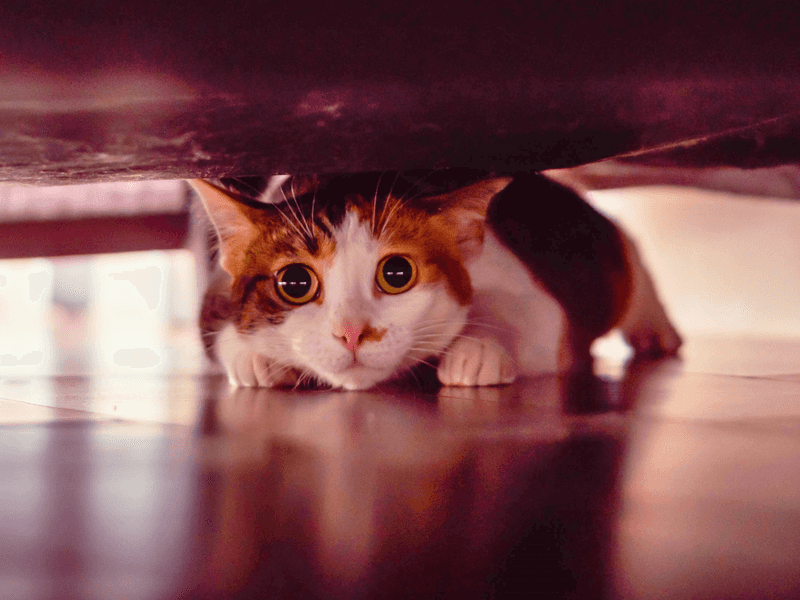
When your feline suddenly turns into a hide-and-seek champion, it could be a red flag. Cats often retreat to hidden spots when they’re in pain, seeking solace away from prying eyes. It’s like their personal “Do Not Disturb” sign. If your cat’s new hobby is hiding, it might be time for a vet visit.
5. Changes In Grooming Habits

Cats are the ultimate self-cleaning machines, but if they start over-grooming or neglecting their hygiene, something’s up. Excessive grooming can indicate pain or stress, while neglect might mean they’re feeling too poorly to care. It’s like your cat’s telling you, “Something’s not right with my fur-tastic routine!”
6. Aggression
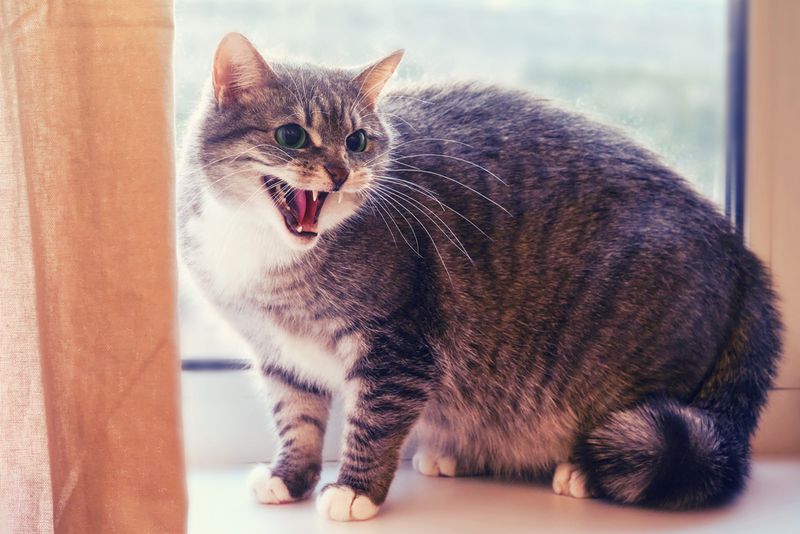
Has your sweet kitty turned into a tiny terror? Aggression can be a sign your cat’s feeling unwell or in pain. It’s not just a mood swing; it’s a potential cry for help. If your normally friendly feline is suddenly swiping at you, consider it their not-so-gentle nudge to check for underlying issues.
7. Reluctance To Move
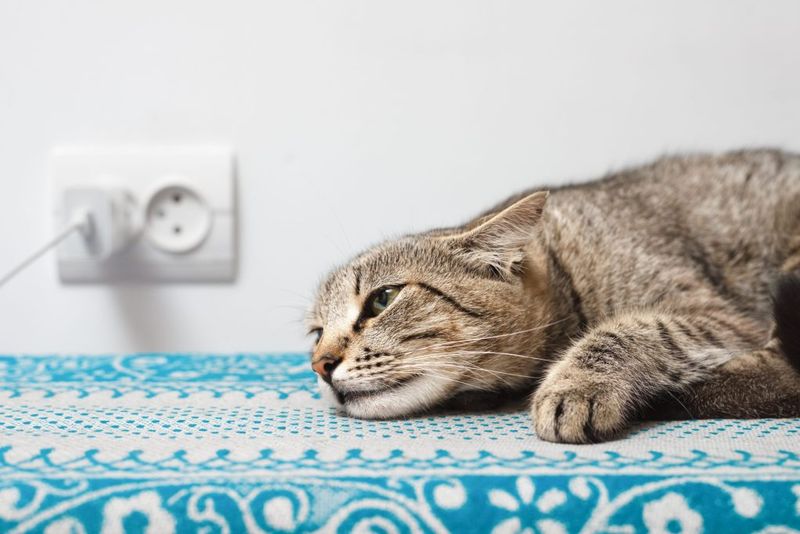
A cat that’s hesitant to leap, climb, or even walk might be dealing with pain. Their reluctance to move can indicate joint issues or other discomfort. It’s like your cat’s saying, “Ouch, this movement hurts!” If your feline is suddenly more stationary than a statue, it might be time to consult a vet.
8. Changes In Posture
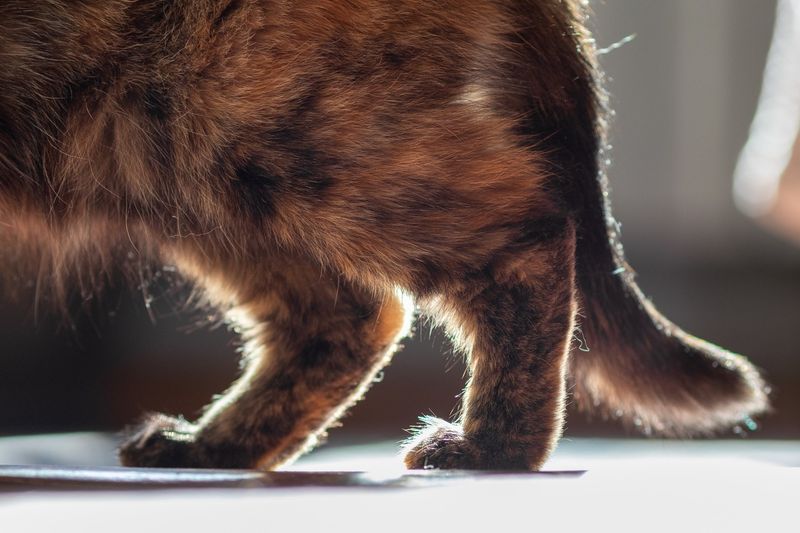
Notice your cat standing like a yoga enthusiast in a permanent downward dog? Changes in posture, like a hunched back or tense muscles, can hint at discomfort. It’s as if your cat’s silently screaming, “Something’s not right!” Be observant of these subtle body language cues that may indicate a need for medical attention.
9. Sensitivity To Touch
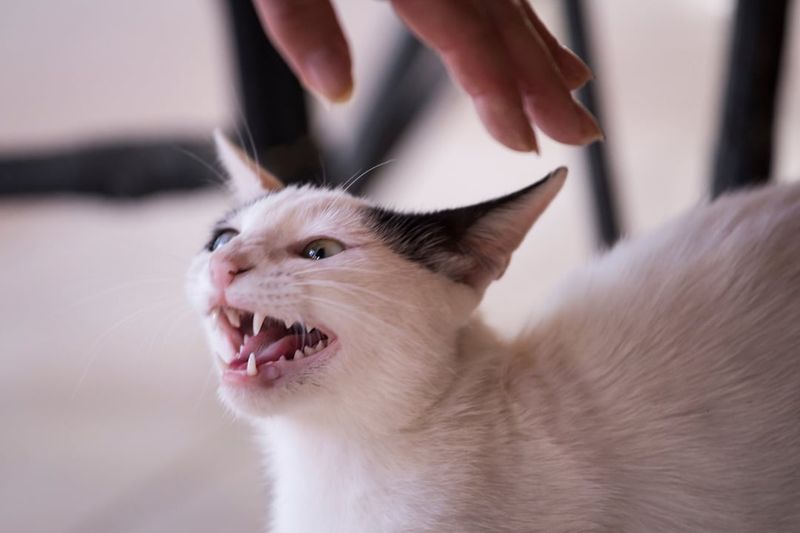
If your feline friend flinches or hisses at your touch, it might be more than just a case of the grumps. Sensitivity to touch can signal pain almost as if they’re saying, “Hands off, I’m hurting!” Pay attention to these reactions, especially in areas like the spine or abdomen, where discomfort might be lurking.
10. Breathing Changes
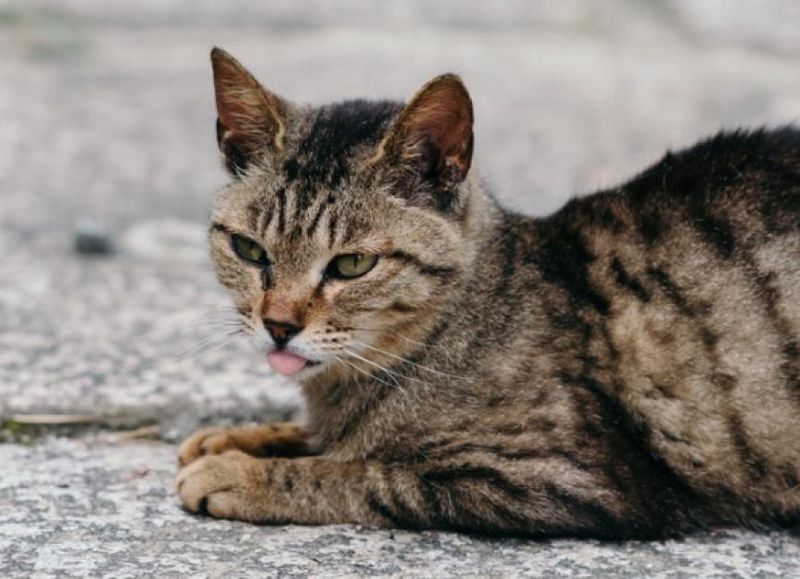
Heavy breathing or panting in cats is a red flag waving frantically. Unlike dogs, cats shouldn’t pant unless they’re stressed or overheated. If your kitty is puffing like they just ran a marathon, it’s time to check for pain or distress. It’s like their body’s way of signaling, “Something’s not right here!”
11. Decreased Interest In Play
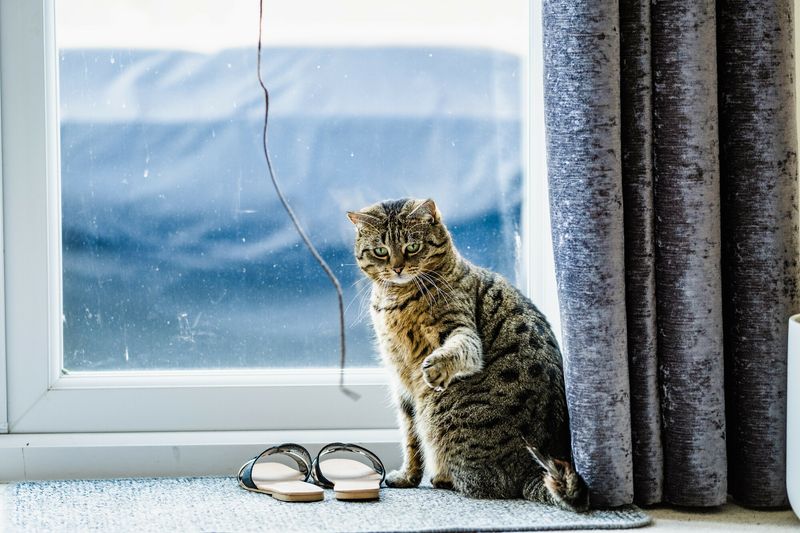
Cats are usually playful, mischievous creatures. If your furball suddenly loses interest in toys or playtime, it might be a sign they’re not feeling well. It’s like their inner kitten is on vacation. A consistent lack of enthusiasm for fun activities can indicate pain or discomfort, warranting a closer look.
12. Changes In Litter Box Habits
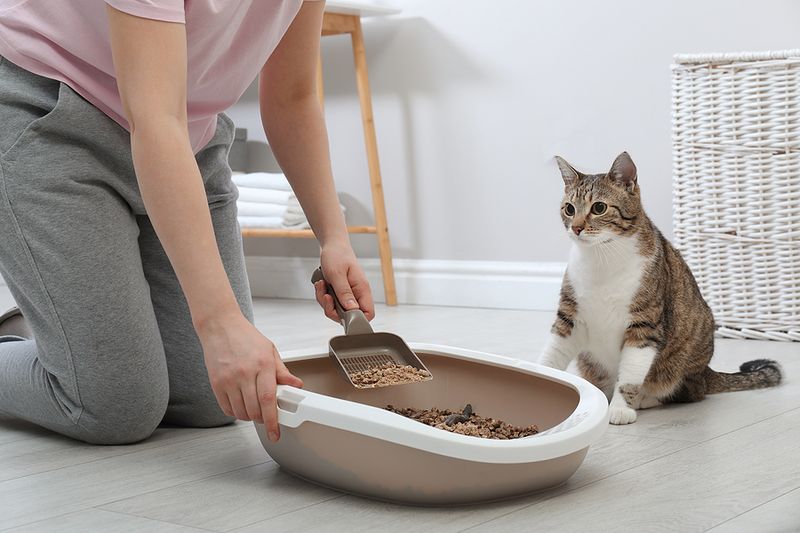
If your cat’s using the bathroom like they’re writing a mystery novel, it might signal trouble. Changes in litter box habits, like missing the mark or avoiding it altogether, can be signs of discomfort. It’s their subtle way of saying, “Something’s amiss in my kingdom!” Address these changes with care and curiosity.
13. Swelling Or Lumps
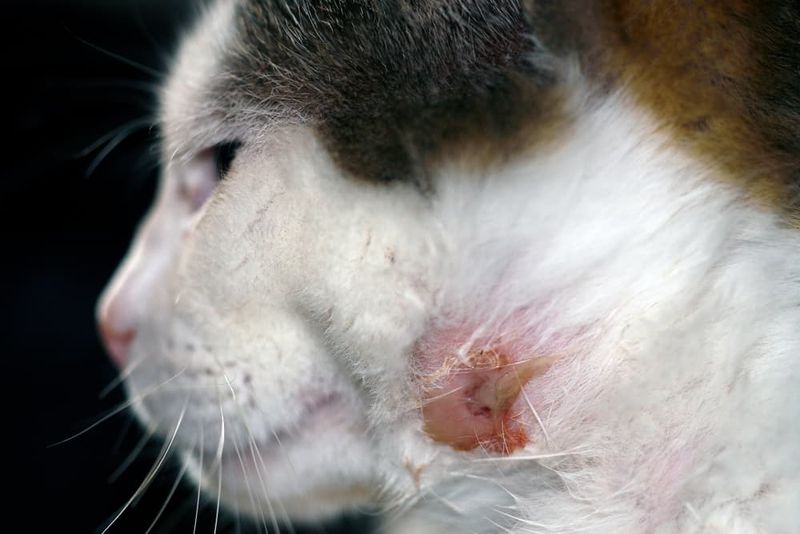
Lumps and bumps are not just unsightly; they can be painful or indicate underlying issues. If you notice swelling or new growths on your cat, it’s essential to investigate further. It’s like your cat’s body is sending an urgent memo. Don’t ignore these physical changes; consult your vet for guidance.
14. Changes In Vocal Tone
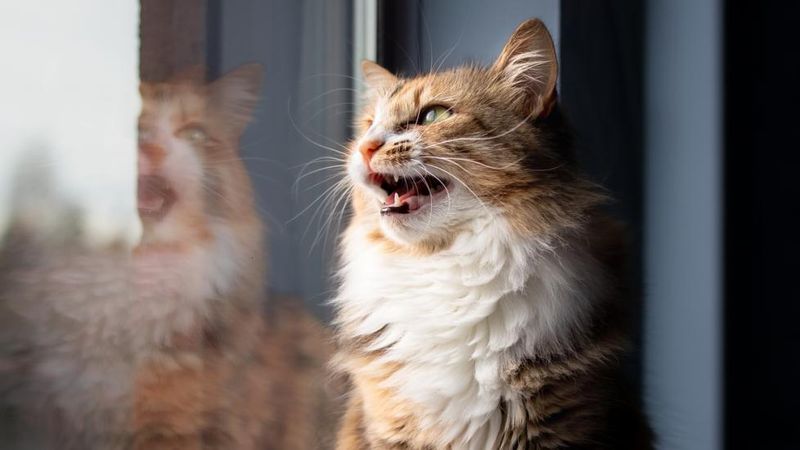
A shift in your cat’s meow might be more than just an attempt at feline opera. Changes in vocal tone can indicate pain or distress. If your usually chatty cat suddenly sounds different, it’s like they’re trying to communicate discomfort through their voice. Listen closely; it might be their way of reaching out.
15. Purring While Calm
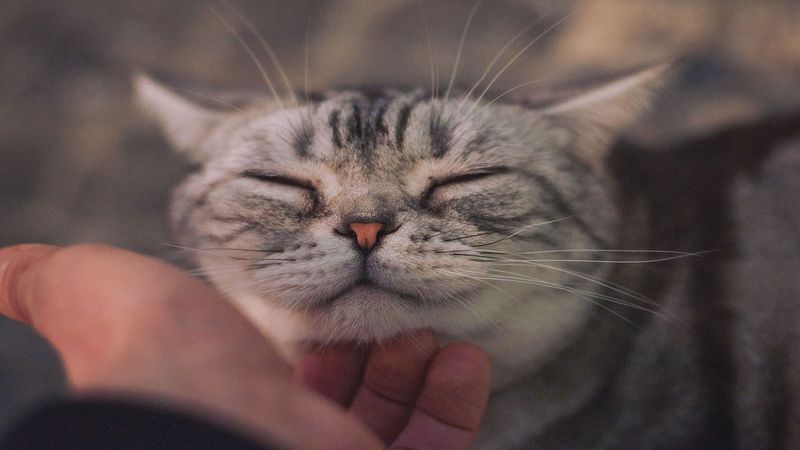
Ah, the sweet sound of a happy cat purring away, basking in a sunbeam. This isn’t just a random motor sound; it’s your cat’s way of saying, “Life’s good!” Purring while calm and relaxed signals contentment and happiness. It’s their way of sharing those warm, fuzzy feelings with you.
16. Kneading
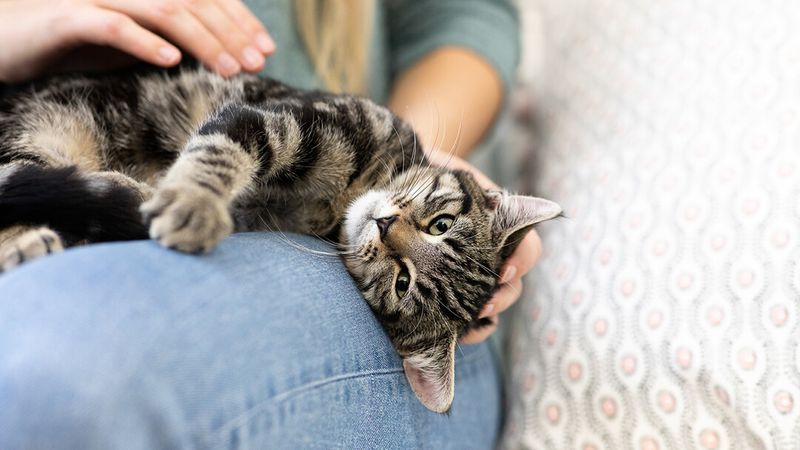
When a cat kneads, it’s like they’re giving the universe a gentle massage. This rhythmic paw motion harks back to kittenhood and signals happiness and comfort. If your feline’s kneading away while in your lap, it’s their way of saying, “I’m content and at peace.” Enjoy this quirky display of feline affection.
17. Playfulness
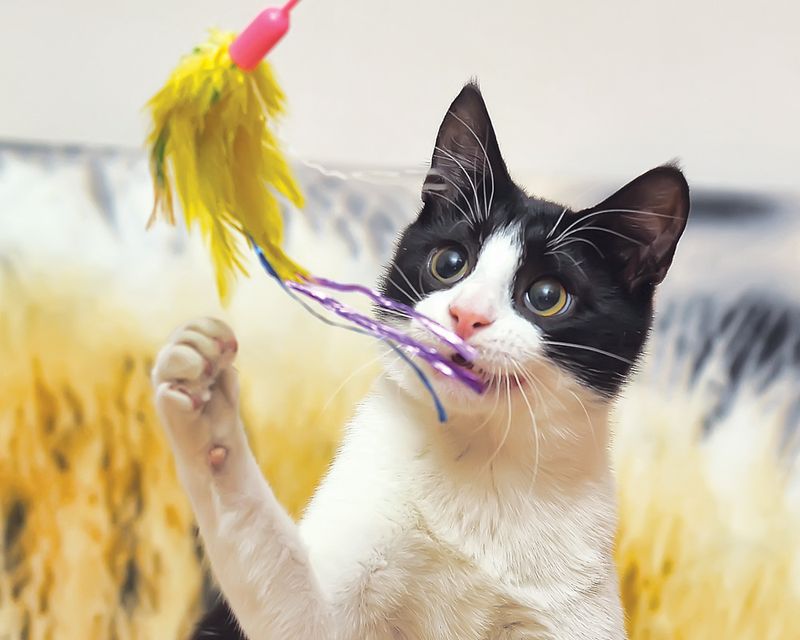
Playfulness in cats is a sign of a happy, healthy feline. When your cat is engaging in antics, chasing toys, or pouncing around, it’s like they’re saying, “I’m having the time of my life!” This behavior shows they’re physically and mentally stimulated, providing a joyful glimpse into your cat’s well-being.
18. Slow Blinking
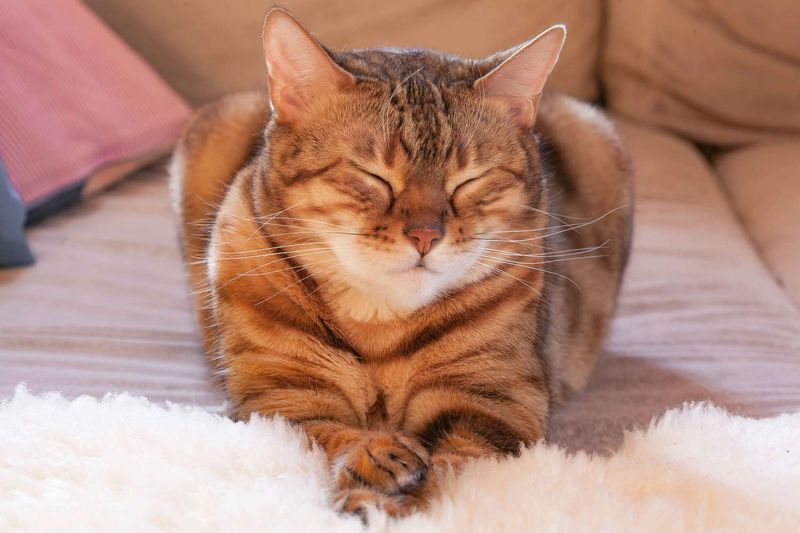
Ever noticed your cat giving you a slow, deliberate blink? It’s like a feline ‘I love you.’ This gesture is a sign of trust and affection in their world. When your cat slow blinks at you, it’s their way of saying, “I’m comfortable and happy with you.” Feel free to return the gesture and deepen your bond.
19. Head Butting
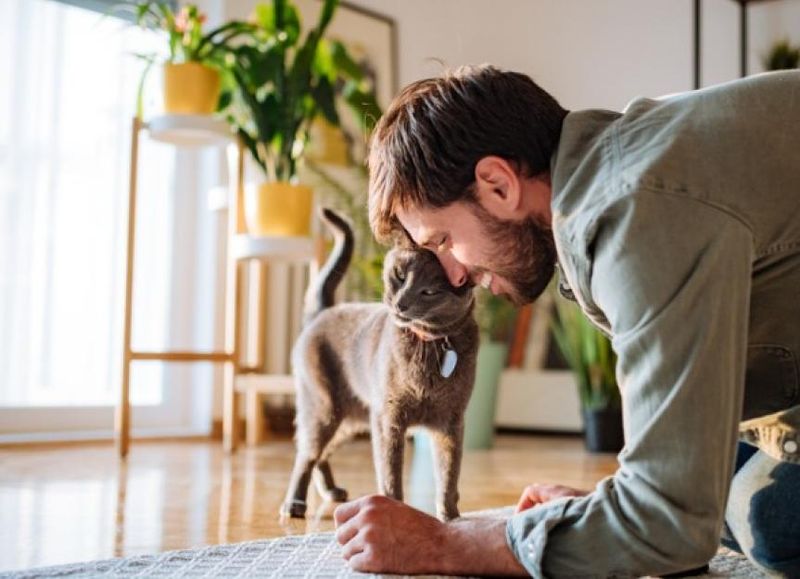
A cat headbutting you is its way of marking you as a part of its inner circle. This behavior, often called “bunting,” is an expression of affection and trust. When your cat gives you a gentle head bump, it’s like they’re saying, “You’re my favorite human!” Enjoy these little nuggets of kitty love.
20. Curiosity
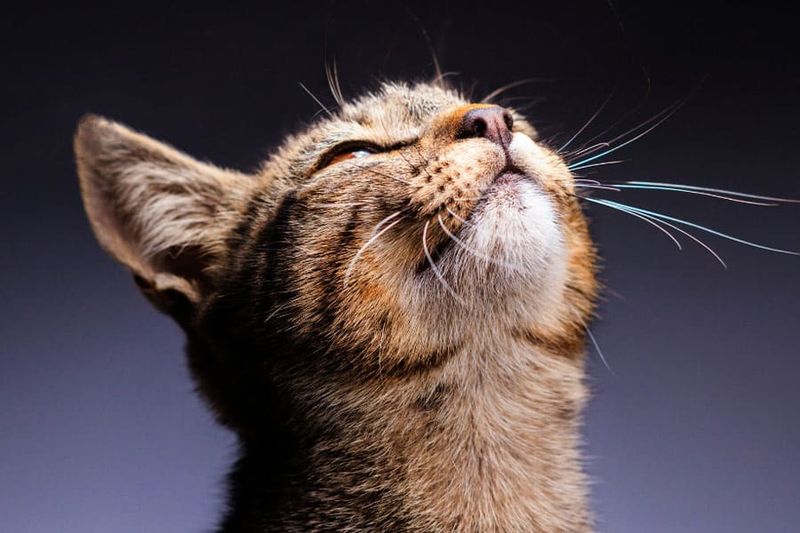
A curious cat is a happy cat. If your feline is keenly observing the world, it’s a sign they’re feeling good. Curiosity indicates mental stimulation and contentment. Whether they’re watching birds or investigating new corners, it’s like they’re saying, “I’m engaged with life!” Encourage this behavior for a happy feline.

